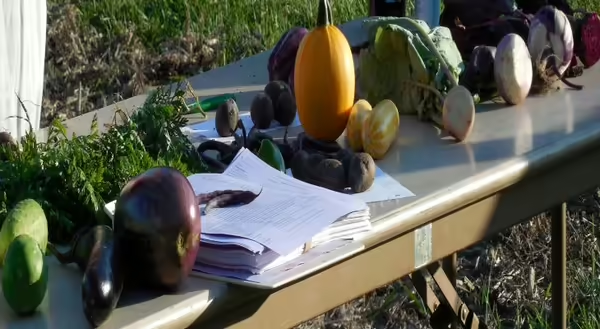
The fruits of our summer labors have started to ripen and will soon be ready for harvest. As gardeners, it is common we overplant. Most of us end up with more produce than we can use. Neighbors, friends, and others typically benefit from the overflow. Keep the tips here in mind to help get the longest life out of your harvest.
Produce shelf life and quality after harvest are often said to follow an 80–20 rule: 80% of the postharvest quality is built into the crops before harvest, while 20% is determined by how produce is handled after harvest. There are three general categories of preharvest factors: genetic, environmental, and cultural.
Genetic factors include the traits for determining growth and production. Commercially, quality of both appearance and texture as well as how the produce ships have an influence. Most home growers, however, tend to select varieties for flavor and use of the fruits and vegetables. They also harvest when fruits and vegetables are at their best ripeness.
You can be reminded of the other two categories by the old saying, When life gives you lemons (an environmental factor), make lemonade (a cultural factor). Environmental factors are the ones you cannot control: the amount of natural light and rain, temperatures (over winter, through the summer, and variations across seasons), and wind. Even if you have poor environmental factors one season, cultural factors can help give you a growing chance. Cultural factors are the practices you can control: irrigation, fertilizing, pesticides, and planting and harvest times.
Though the 80% preharvest factors may have the bigger proportion of influence, the postharvest 20% can actually make the more significant difference with your produce, starting with harvesting and handling. Take extra care when harvesting to prevent dropping, bruising, or picking injury, which will extend shelf life. Injury to a fruit or vegetable has four results: increased rate of respiration, increased ethylene production, increased water loss, and the creation of a port of entry for pathogens. Ethylene is the gaseous plant hormone responsible primarily for ripening. A few of the top ethylene producers are apples, melons, and tomatoes. Not all produce is affected by ethylene, but peppers, green beans, cucumbers, and lettuce are among the sensitive crops. Storing ethylene producers separately from ethylene-sensitive harvest can increase the life of your produce.
Another postharvest factor to consider is temperature. Morning is the best time to harvest, when lower temperatures mean there is not a lot of field heat stored in the produce that needs to be removed. Heat has a ripening effect, causing produce to mature faster. If you have to do a large harvest later in the day, keep picked produce out of the sun. Shading the produce under a tree or an umbrella can help reduce premature spoiling.
Once you can get your harvested vegetables and fruits to a refrigerator, storing them in the crisper drawers will help control another influencing factor—humidity. The amount of humidity appropriate for storage varies from crop to crop. Though the crisper drawers on most refrigerators allow you to vary the humidity level in the drawer, in most cases you will have to strike a compromise because you are storing produce with different ideal humidity levels. For example, the optimal storage conditions for raspberries are 32oF and at least 90% relative humidity. Peppers, by contrast, prefer 45oF and 90–95% relative humidity. Storing these two crops together would not be a problem (though the temperature would have to be compromised for the berries, as the FDA recommends that refrigerators be kept at or below 40oF).
One of the best resources regarding the postharvest storage of produce is USDA Handbook #66, The Commercial Storage of Fruits, Vegetables, and Florist and Nursery Stocks (https://www.ars.usda.gov/ARSUserFiles/oc/np/CommercialStorage/CommercialStorage.pdf). The handbook contains all the information and recommendations from scientific studies done on produce. For each fruit or vegetable, there are details on harvest maturity, storage considerations, and unique horticultural information. The guidance from Handbook #66 is summarized in multiple extension publications; two are University of Illinois Extension’s Watch Your Garden Grow and Iowa State University’s Harvesting and Storing Vegetables PM0731.
Taking the factors discussed here into consideration as you harvest the fruits of your labor should help them last as long and as fresh as possible. Given the investment of both time and money in your gardening, preserving your produce value just makes sense.